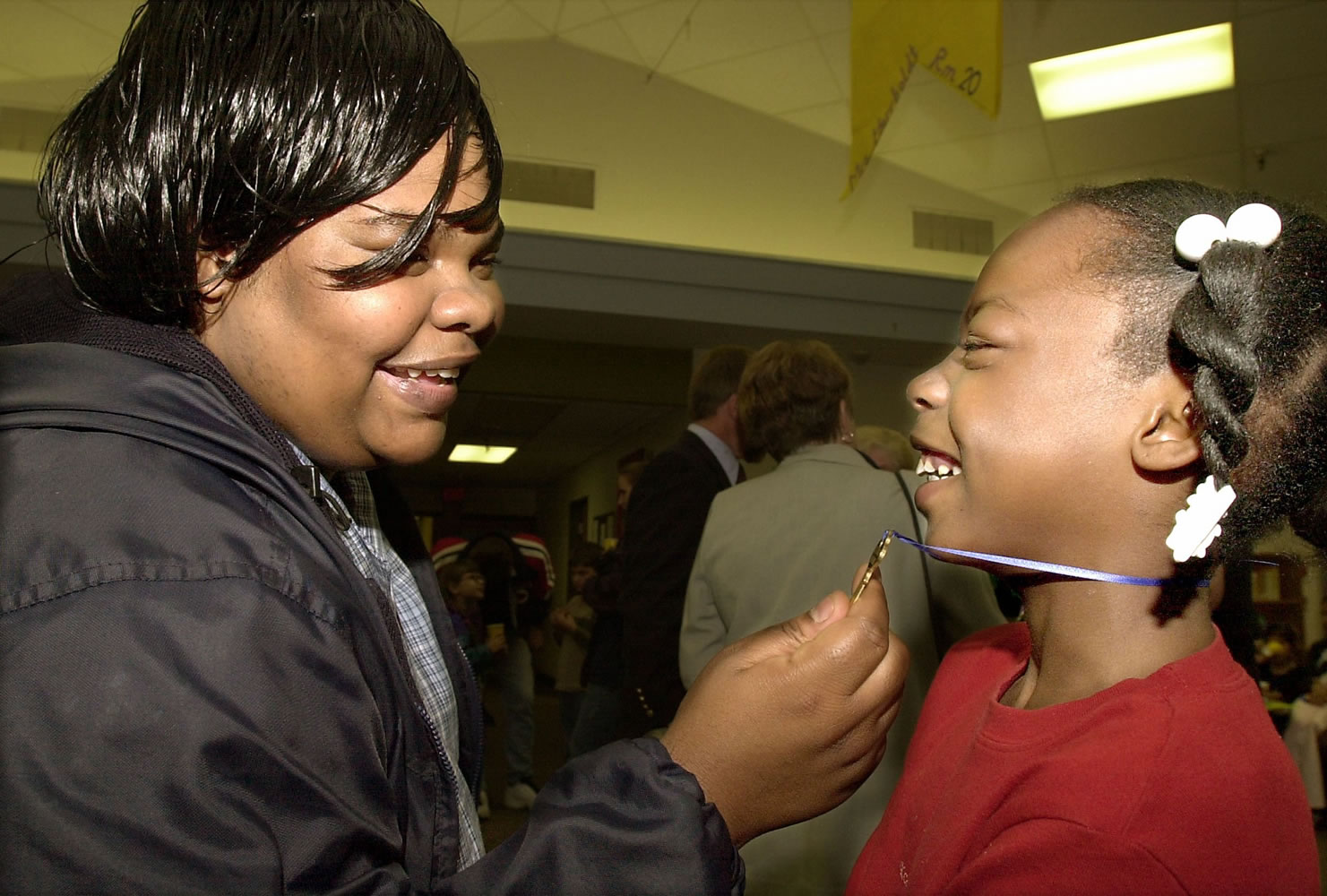(Some sponsored more than one project):
Richard and Mary Granger.
Brot and Mary Bishop.
Leslie Durst
Edward and Dollie Lynch.
Mason Nolan.
Don Campbell Family.
Ralph and Susan Gilbert.
Wes and Nancy Lematta.
George and Carolyn Propstra.
William and Catharine Byrd.
Gloria John.
Russ and Sarah Tennant.
Mertis Harmon.
Eva Hunt.
Kathi Wiley Gladson.
Candace Young.
Vancouver Rotary (Jan Asai, liaison).
• Project 1, 1995: Fourth-graders at Washington Elementary.
• Project 2, 1997: Fourth-graders at Hough Elementary.
• Project 3, 1999: Third-graders at Harney Elementary.
• Project 4, 2001: Second-graders at King Elementary.
Information about I Have a Dream of Southwest Washington is at: http://www.ihad-swwa.com/
Some Project 4 students will continue to be with I Have a Dream for up to six more years. They have up to two years to complete high school or begin college after their classmates graduate, followed by up to four years of higher education.
Students get up to half the cost of tuition at Washington State University at the time they graduate, minus their grants, scholarships and aid. (If one-half of WSU tuition is $4,900 and a Dreamer gets $3,000 in aid, then I Have a Dream pays $1,900.) This also assures full tuition coverage at the community-college level.
Five products of Vancouver’s I Have a Dream program gathered recently in a classroom at Hudson’s Bay High School to share experiences and compare perspectives.




